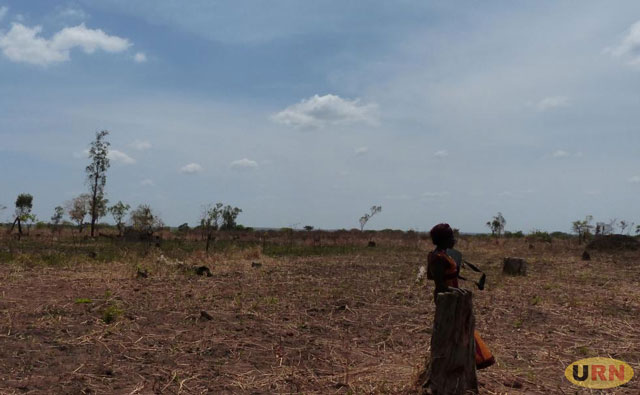
Gulu, Uganda | THE INDEPENDENT | World Vision Uganda has unveiled a multi-billion project aimed at the restoration of degraded landscapes in Acholi, and Lango Sub-regions in Northern Uganda to mitigate climate change effects. The project worth 11.2 billion Shillings dubbed “Regreening Uganda Communities-Farmer Managed Natural Regeneration (FMNR) catalyst project will be implemented in Pader, Agago, Omoro, Kole, and Oyam districts.
Speaking at the project launch in Gulu City, Edward Khaukha, the World Vision Uganda Regional Programme Manager for Northern/Karamoja Region says the FMNR project seeks to promote the conservation of natural tree cover by farmers. Khaukha notes that the five-year project that runs till 2028 will help to regreen the degraded environment with a vision to mitigate the current adverse effects of climate change brought by heavy degradation of forest and wetland covers.
According to Khaukha, the five-year project will see community members equipped with skills to manage indigenous trees to enable them to regenerate naturally at a very low cost.
Stephen Baluku, the Project manager of the catalyst project says through the project, they will partner with local leaders and farmers in the respective project areas to map out areas that have been degraded and identify indigenous trees they intend to conserve. He notes that the approach is beneficial for both the locals and the environment as it is a low-cost option for restoring tree cover on farms which promotes biodiversity on farms.
Judith Tomma Okuonzia, the National FMNR scaling Specialist explains that the project doesn’t target the planting of new tree species but rather encourages the management of natural trees within the community. She notes that through the model, farmers are helped to identify tree species that they would like to conserve either for medicinal values, firewood, fruits, or fodder for management.
Moses Opio, the acting Natural Resource Officer of Oyam District says they are already experiencing adverse effects of climate change due to the constant destruction of tree covers and wetlands by locals. He notes that out of the eight national forest reserves managed by the National Forestry Authority (NFA), two of them, Gung Gung Forest Reserve in Ngai sub-county and parts of Opit Forest Reserve in Abok have been heavily degraded by locals.
According to Opio, through FMNR implementation, the district will achieve targets of restoring tree covers which are beneficial for farmers, and also mitigation of climate change effects.
Through the five-year project, World Vision Uganda targets to regenerate a total of 573,487 hectares of degraded landscape in Northern Uganda and the Eastern districts of Tororo, Bugiri, and Butaleja where the same project is covering.
Uganda has registered a significant loss of its forest cover over the years with statistics showing the county had only 1,829,779 Ha of forest (9 percent of the total land cover) by 2015 out of the 4,880,484 Ha (24 percent of the total land area) that existed in 1990.
In Northern Uganda, human activities such as tree felling for timber, bush burning, farming, and commercial charcoal production have been blamed for the dwindling population and near extinction of indigenous tree species.
****
URN
 The Independent Uganda: You get the Truth we Pay the Price
The Independent Uganda: You get the Truth we Pay the Price



